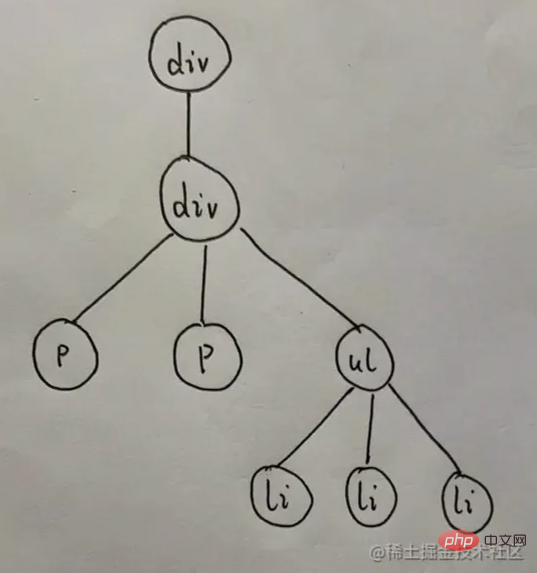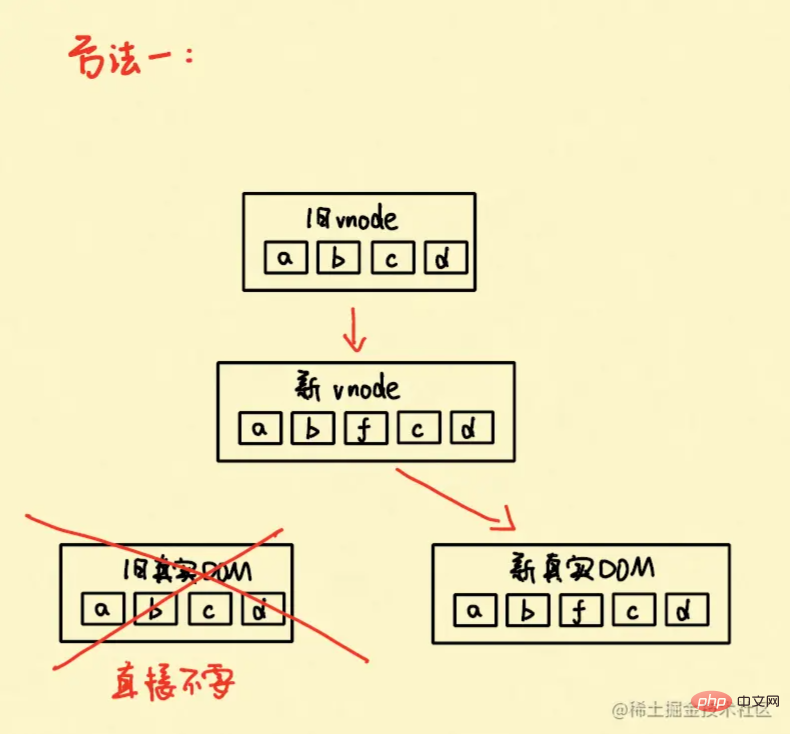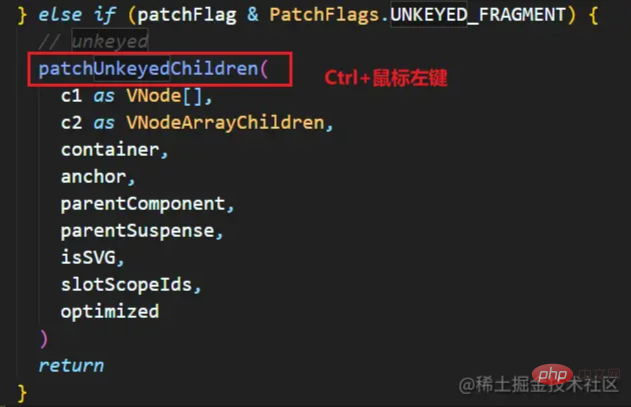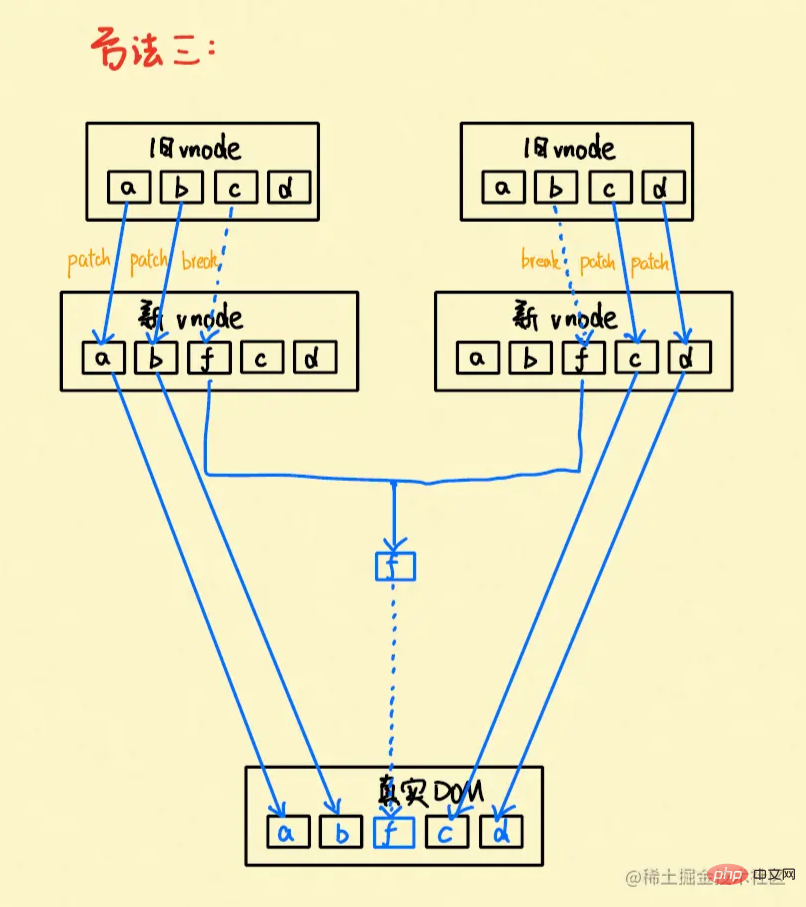Home > Article > Web Front-end > In-depth analysis of the key in vue to see what the key can be used for!
What is the use of key? The following article will give you an in-depth analysis of the key in vue to see what the key can be used for. I hope it will be helpful to everyone!

What is the use of key?
virtual DOM algorithm (diff algorithm), and is not used when identifying new and old nodes when comparing them VNodes
key, Vue will use an algorithm that minimizes dynamic elements and tries to modify/reuse elements of the same type in place as much as possibleUse key, it will rearrange the order of elements based on key changesremove/destroy elements that have a keythat do not existFaced with these vague concepts, don’t be impatient. Read it once and get an impression. Next, we will analyze in depth step by step what the key is used for. [Related recommendations: "vue.js Tutorial"]
1 vnode virtual node
##vnode: virtual node, virtual node
Document, element, node
Simply put, the node to be rendered by vue on the page is a virtual node
<template id="my-app">
<div class="title" style="font-size: 30px; color: red;">哈哈哈</div>
</template>The div here is a virtual node. In vue, it exists in this form const vnode = {
type: "div",
props: {
class: "title",
style: {
"font-size": "30px",
color: "red",
},
},
children: "哈哈哈",
}; What I don’t understand may be the children attribute, because now the div has no child elements, so the value is only "hahaha". If there are child elements, then it will be nested in a matryoshka until the last node. , such as children: [
{
// 子元素
},
{
// 子元素
}
],
2 vDOM Virtual DOM
is the same as real DOM. If there are real nodes, there will be real DOM. Then if there are virtual nodes, then There is a virtual DOM Of course, the same goes for a virtual DOM tree. There is also a VNode tree, which means there is no need to worry about it. It is probably as follows <template id="my-app">
<div>
<div>
<p></p>
<p></p>
<ul>
<li></li>
<li></li>
<li></li>
</ul>
</div>
</div>
</template>Convert to a virtual DOM tree:

When the virtual DOM is rendered into the real DOM, it is not necessarily exactly the same. This involves components, which I will talk about later when I have the opportunity
3 Rendering process
##4 Case: Insert fAfter understanding the previous ones, let’s get down to business. Only one case is needed to fully understand the role of key. Let’s start with
Let’s look at this simple case (without adding key)
<ul>
<li v-for="item in letters">{{item}}</li>
</ul> data() {
return {
letters: ['a', 'b', 'c', 'd']
}
},
methods: {
insertF() {
this.letters.splice(2, 0, 'f');
}
},It can be seen that the purpose of this question is to insert an f
between ab and cd. After understanding this simple case, we started to think about whether there is any way to insert it into the real DOM. What?
There are three following types:
Method one (ordinary method)
 Instructions: Directly Delete the previous dom and re-render it with the new vnode
Instructions: Directly Delete the previous dom and re-render it with the new vnode

Vue will judge whether you have brought the key through the judgment statement

 Then check
Then check
, you can view the execution process of the diff algorithmHere is a brief description:
Similarly, you can view it by following the steps of method two patchKeyedChildren()
patchKeyedChildren()
This method is the essence, it starts to get complicated
Patch from the tail, when it is found to be different (here c !== f), break
So far, a, b, c, d have is rendered into the real DOM, the only difference is f, let’s start looking for f
to judge:
If the old vnode
If new vnode > old vnode, uninstall the redundant nodes of the old vnode
If new vnode = old vnode, this is very complicated. Regardless of the order, try to patch the same items in it, and then perform uninstall and mount operations
Summary: At this point, the entire case process has been completely gone through. The author can only understand this. This article combines coderwhy’s video and some of my own thoughts (video source: https://ke.qq.com/course /3453141), so there may be something wrong, everyone is welcome to criticize and correct me
[Related recommendations: "vue.js tutorial"]
The above is the detailed content of In-depth analysis of the key in vue to see what the key can be used for!. For more information, please follow other related articles on the PHP Chinese website!